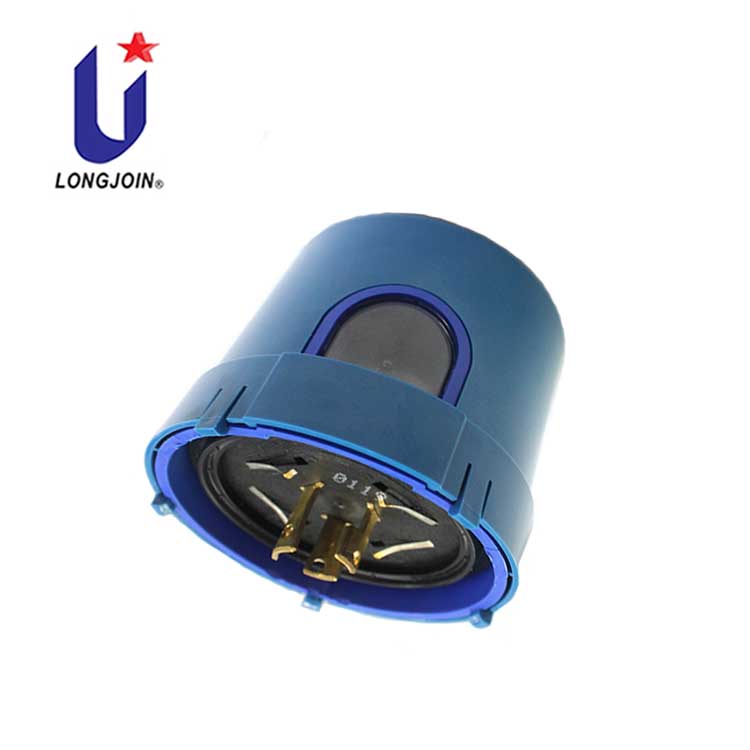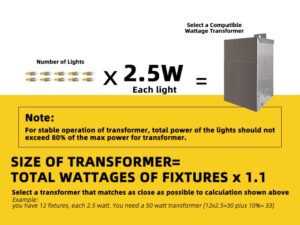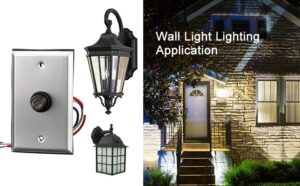Oltre l'IP65: come l'innovazione delle fotocellule resilienti può proteggere le città dai disastri climatici
Introdurre
Un uragano devastante ha colpito la Florida nell'ottobre 2024, distruggendo più di 70.000 lampioni. A rompersi non erano sempre le lampadine, ma spesso le centraline fotoelettriche. Secondo i resoconti post-disastro di Tampa Electric, l'acqua salata ha allagato e mandato in cortocircuito i controller che avevano un grado di protezione IP65.
Questo ha evidenziato una grave falla. Il livello di controllo dell'illuminazione è spesso ignorato, ma è fondamentale in caso di calamità. Una fotocellula fa molto di più che accendere o spegnere le luci. Sorveglia silenziosamente la città. Rilevando la luce del giorno, accende i lampioni quando necessario. Ora si collega persino alle reti delle smart city per condividere dati e risparmiare energia. Gli eventi meteorologici estremi si verificano sempre più spesso. Dobbiamo ripensare il modo in cui le fotocellule sono costruite per garantire resistenza e affidabilità.
Perché l'IP65 non è più sufficiente per il controllo della luce esterna?
Con i cambiamenti climatici, i tradizionali sensori fotoelettrici con grado di protezione IP65 vengono spinti oltre i loro limiti progettuali. Ma perché esattamente l'IP65 sta fallendo e cosa dovrebbe sostituirlo?
Limitazioni dell'IP65:
- Resistente solo ai getti d'acqua, non all'immersione
- Nessuna garanzia contro la corrosione causata dall'acqua salata
- Giunture vulnerabili e guarnizioni deboli in caso di forti venti e inondazioni
Per resistere alla prossima generazione di tempeste, le città necessitano di unità di controllo fotocellule con grado di protezione IP68 o superiore. Questa classificazione garantisce la protezione contro l'immersione completa in acqua e, con un alloggiamento adeguato, aumenta la resistenza alla nebbia salina e ai raggi UV.
Valutazione | Descrizione della resistenza all'acqua | Livello di protezione nel mondo reale |
IP65 | Solo getti d'acqua | Va bene per la pioggia, non funziona in caso di inondazioni |
IP67 | Immersione temporanea (30 minuti a 1 m) | Più sicuri durante le mareggiate |
IP68 | Immersione a lungo termine + a tenuta di polvere | Ideale per uragani, acqua salata |
Aggiornamento a sistemi di fotocellule IP67 come quelli di Long-join JL-207-IP68, uno dei modelli più robusti disponibili, aiuta le città a costruire infrastrutture di controllo dell'illuminazione a prova di calamità, in grado di resistere quando serve di più. aiuta le città a costruire infrastrutture che resistono quando serve di più.
Quali tendenze tecnologiche intelligenti stanno rimodellando le fotocellule?
Il nostro sensore fotoelettrico resistente resiste alle condizioni più difficili. I lampioni intelligenti IoT ora fanno molto di più che accendere le luci al tramonto e spegnerle all'alba. Il futuro risiede nella multifunzionalità e nella connettività. Quali innovazioni stanno cambiando il nostro modo di concepire la progettazione delle fotocellule?
1. Registrazione integrata dei dati di ripristino e ripristino dei disastri
Cosa succede quando un sistema di controllo dell'illuminazione si spegne? Senza diagnostica, è solo un buco nero. È lì che si nasconde il... Memoria EEPROM negli interruttori fotocellula entra in gioco.
La EEPROM consente:
- Mantenimento dello stato durante l'interruzione di corrente
- Monitoraggio dell'ultimo stato attivo e dei timestamp di errore
- Memorizzazione di sovratensioni o guasti di illuminazione
Ciò aiuta le squadre di servizi pubblici a smistare le riparazioni dopo i disastri e facilita la documentazione assicurativa.
Caratteristica | Senza EEPROM | Con EEPROM |
Memoria di stato | Perso durante il blackout | Recuperato all'istante |
Registri diagnostici | Non disponibile | Conservato all'interno dell'unità |
Coordinamento del restauro | Manuale, ritardato | Basato sui dati, prioritario |
2. Feedback di rete: perché ogni fotocellula dovrebbe rispondere?
Questi moduli trasformano ogni sensore fotocellula in un nodo di segnalazione a bassa potenza, offrendo:
- Avvisi di interruzione in tempo reale
- Monitoraggio ambientale (umidità, tensione)
- Mappatura dei guasti basata sulla posizione
Con Serie JL-245-NB di Long-join, le aziende di servizi pubblici possono visualizzare e gestire da remoto ogni sensore di luce fotoelettrico esterno, comprese le unità avanzate come la fotocellula JL-243F, su un'intera rete cittadina.
Opzione di connettività | Beneficio | Caso d'uso |
NB-IoT | A lungo raggio, stabile in caso di disastro | Connettività rurale post-disastro |
ZigBee | Rete veloce per cluster urbani | Controllo intelligente dell'illuminazione stradale urbana |

3. Alloggiamento per condizioni meteorologiche estreme: come dovrebbero essere costruite diversamente le fotocellule?
Un tempo i produttori di fotocellule si concentravano principalmente su applicazioni in ambienti interni o in condizioni esterne miti. Ma ora, le fotocellule per il controllo dell'illuminazione stradale devono resistere a vento estremo, corrosione e calore. La chiave? Materiali e guarnizioni.
Le specifiche ideali includono:
- PBT stabilizzato ai raggi UVinvece di PC/ABS
- Conformità agli standard ASTM B488 per la nebbia salina
- Sigillatura a doppio strato: guarnizioni in silicone + resina epossidica
Queste caratteristiche impediscono all'acqua salata di penetrare all'interno. Mantengono i circuiti al sicuro, anche se il dispositivo si trova brevemente sott'acqua durante un uragano. Questo è fondamentale per supportare le infrastrutture di illuminazione per uragani, costruite per resistere alle pressioni climatiche.
La fotocellula JL-207-IP68 migliorata di Long-join sfrutta questa struttura per soddisfare le esigenze più severe di oggi.
Quali sono le aree chiave del framework di aggiornamento del prodotto di Long-join?
Per progettare in caso di catastrofe, è necessario ripensare ogni modulo della fotocellula, non solo il sensore.
Ecco come la roadmap dell'innovazione di Long-join rafforza ogni parte:
Componente | Vecchio design (IP65 legacy) | Nuovo aggiornamento resiliente | Perché è importante |
Alloggiamento | PC/ABS, IP65 di base | PBT, IP68, resistente alla nebbia salina (ASTM B117) | Sopravvive agli uragani, ai raggi UV, al sale |
Protezione contro le sovratensioni | Solo MOV da 2 kA | 10kA/20kV + fusibile termico | Gestisce fulmini e griglie instabili |
Memoria | Nessun backup dei dati | EEPROM con registri | Monitoraggio e diagnostica del restauro |
Feedback | Solo passivo | ZigBee / NB-IoT | Avvisi in tempo reale e gestione remota |
Tutti i moduli sono in linea con le tendenze globali dell'illuminazione, tra cui ANSI C136.41 standard e certificazione UL/CE.
In che modo le fotocellule possono supportare le città intelligenti e le squadre di emergenza?
Quando le reti elettriche crollano, i lampioni stradali non sono più solo un semplice servizio pubblico: diventano linee vitali. Le fotocellule intelligenti possono ora svolgere funzioni di emergenza e sicurezza pubblica, andando oltre l'illuminazione.
Le fotocellule con funzioni di emergenza possono abilitare:
- Allerte di disastro
Rileva anomalie di umidità/tensione e attiva avvisi. - Ancoraggi per illuminazione di backup
Memorizza l'ultimo stato noto e ripristina automaticamente il funzionamento della luce. - Grid Insight
Mappa lo stato dell'illuminazione in tempo reale per dirigere in modo efficiente le squadre sul campo.
Queste funzioni trasformano un sensore fotoelettrico standard in un dispositivo di resilienza intelligente.
Nell'architettura della soluzione di Long-join, un sensore di luce stradale con fotocellula diventa un nodo periferico, parte di una rete di controllo dell'illuminazione più ampia che aiuta le città a vedere, pensare e agire in tempo reale.
Quale futuro per le infrastrutture di illuminazione fotoelettriche resilienti?
I disastri naturali non sono più un evento occasionale, ma una certezza annuale. Le infrastrutture di illuminazione, in particolare i sistemi di controllo dell'illuminazione stradale, devono passare da un approccio reattivo a uno basato sulla risposta al cambiamento climatico.
In Long-join, la nostra tabella di marcia si basa su tre principi:
- Tempra meccanica– Alloggiamento robusto, componenti sigillati
- Integrazione del feedback intelligente– Memoria, segnale e diagnostica
- Allineamento di emergenza– Strumenti di recupero utili
In qualità di produttore globale di fotocellule con profonde radici nella ricerca e sviluppo, siamo orgogliosi di guidare l'evoluzione dell'ecosistema di controllo fotografico per le città intelligenti.

Pronti a costruire un'illuminazione stradale indistruttibile?
Le condizioni meteorologiche estreme non aspettano. Le città devono agire subito per aggiornare i loro sensori di illuminazione fotoelettrici con hardware a prova di tempesta e livelli di dati intelligenti.
Scopri le linee IP68 e NB-IoT-ready di Long-join:
- Fotocellula potenziata JL-207-IP68
- Fotocellula intelligente serie JL-245-NB
- Presa ANSI JL-240FXA
Costruiamo un futuro in cui le luci non si spengono mai, nonostante la tempesta.
Conclusione
Gli eventi meteorologici estremi non rappresentano un rischio futuro: stanno già ridefinendo le aspettative infrastrutturali. Per Long-join, questo apre una finestra strategica quinquennale per aggiornare la robustezza dell'hardware, integrare canali dati in tempo reale e allinearsi ai protocolli di illuminazione di emergenza.
Grazie a un approccio basato su tre pilastri (resilienza meccanica, feedback IoT e intelligenza di rete), le fotocellule Long-join garantiranno che, quando si verificherà il prossimo uragano, le luci resteranno accese e i dati fluiranno.
Link esterni:
●https://www.tampaelectric.com/blog/2022/Streetlights-will-be-turned-on-24-7-Hurricane-Ian-Restoration/
● https://en.wikipedia.org/wiki/EEPROM
● https://en.wikipedia.org/wiki/Narrowband_IoT
●https://www.digi.com/solutions/by-technology/zigbee-wireless-standard
●https://ieeexplore.ieee.org/document/10670018/
●https://www.specialchem.com/plastics/guide/polybutylene-terephthalate-pbt-plastic
●https://www.astm.org/b0117-19.html






